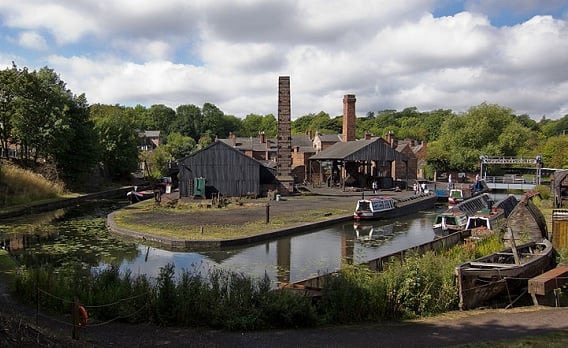
Black Country Living Museum, pictured, has about a 10% no show rate but rates are worse at free museums
Photo: Phil Sangwell
Museum no-shows an ‘unintended consequence’ of reopening success
Some museums are nearly running at their post-Covid capacity. But "reopening doesn't mean recovery" as up to 40% of ticket holders stay home.
About a third of people who book for museum visits aren't showing up, placing added financial pressure on these institutions as they reopen.
New figures from DCMS show a sudden jump in visitor numbers for its sponsored museums after a stasis in July. Across nine sites that are open, patronage had more than doubled to 20% of the usual visitor count for the third week of August.
But museums are facing a new problem with timed-entry ticketing: people who book don't always show up. Some museums are overbooking against an unofficial general post-Covid capacity of about 30%, or issuing email and text reminder notices to would-be patrons.
READ MORE:
- Museums and galleries 'will need support until spring'
- New challenges for museums and galleries as reopening approaches
Others are taking a "carrot and stick" approach, issuing pleas to the public to think about how no-shows affect their local institutions.
"If you have booked a slot, for heaven's sake please show up," Black Country Living Museum Director and Chief Executive Andrew Lovett said.
Lovett, who is also a member of the National Museums Directors' Council (NMDC), said his museum – an open-air site that charges for admission – had fared better than some others since reopening at the start of August.
"Some places, I think in the early days, it was as high as 40% [no-shows]; it's only about 10% here.
"It's one of those unintended consequences of free admission where there isn't a serious consequence to book a slot and not show up."
Reopening v recovery
Anecdotal evidence from the museums sector suggests that the public's confidence to return to museums is growing.
Lovett said he was "not terribly surprised" by the resurgence in visitorship, commenting that people were adjusting to covid-safe measures and finding ways to return to the activities they enjoyed pre-lockdown.
"I think the trick has been for all of us [museums] really to try and put in place measures without spoiling someone's visit and ruining the atmosphere."
"But I keep saying that reopening doesn't mean recovery."
While many museums (and local authority museums especially) have concerns about their long-term financial sustainability, some are not in a dire enough position to benefit from the Government's Cultural Recovery Fund.
And even those that have applied, such as the Black Country Living Museum, have questions about what happens after April 2021 when those funds expire.
Lovett said the sector is facing the prospect of "three winters": last year's, this year's and the financial winter imposed by the lockdown.
The problem is particularly pronounced in the north of England where extended lockdowns are perpetuating a 'stay at home' mentality and among museums with more interactive exhibits that largely remain closed.
Questions around capacity
The sudden rise in visitorship raises questions about how many more people museums will be able to welcome while social distancing measures remain.
While there is no official standard capacity for museums, NMDC members suggested 30% capacity for indoor institutions when they were asked to contribute to Government guidance early in the lockdown.
However, capacity is highly dependent on individual museum sites and their design. Black Country Living Museum, for example, is running at about 50%.
Lovett said he would consider pushing that percentage higher but that "it comes down to certain pinch points – toilets, shops, areas where you're normally having people congregate".
"We have steadily grown [since reopening] and I'm sure other organisations are thinking the same.
"Being open, psychologically more than anything else, is better than being closed … actually we feel more positive about the future."
Join the Discussion
You must be logged in to post a comment.